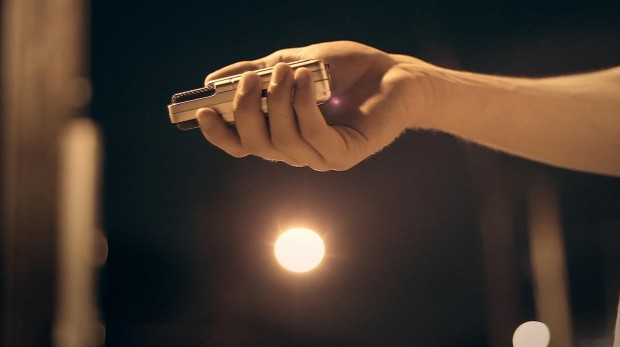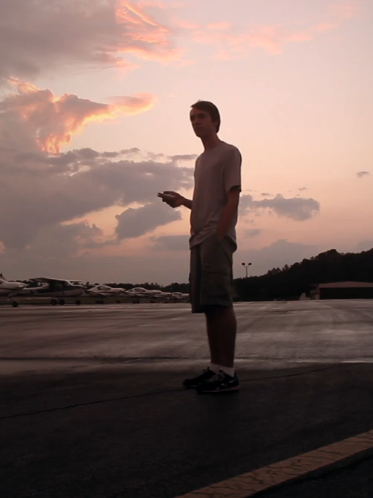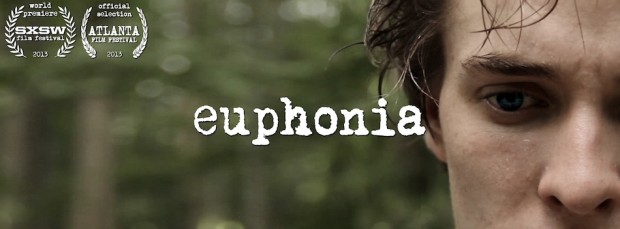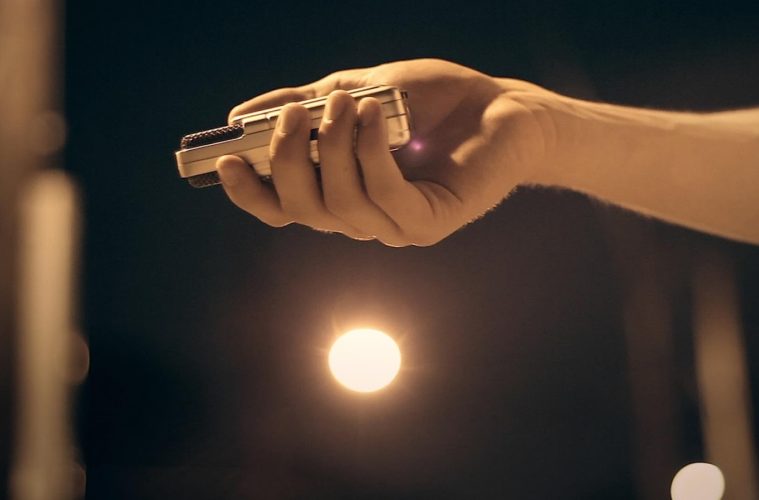
The film Euphonia revolves around the way we interact with our world and how electronic devices, and anything in our lives, can sometimes wedge themselves in between us and other people. Whether it’s iPods, cellphones, or books, these are issues humanity has to deal with. We are constantly trying to keep up with the world around us, but sometimes we need to slow down and simply listen.
Director Danny Madden deals with this in an interesting fashion and through unique methods of storytelling makes it ever apparent. We were able to catch the film out of SXSW and we thought it was a brainy examination of these themes. You can read our review here. So, it’s with great pleasure that the filmmaker has released their entire movie for free as part of Earth Day, and one can stream it below. We were also able to talk with one of the co-producers of the film, Jim Cummings, and you can read the conversation after the embedded film.
One of the first questions on my mind has been revolving around story lately. Myth building has become such a large part of cinema, with nearly every blockbuster going through extravagant hurdles to create a universe that is interesting. But something often disregarded but equally important is the characters, so in that regard I was curious if this was a concept or a story first.
“It was, from the beginning, about audio,” Jim Cummings recently told me over the phone. “We wanted to make a movie about sound and we thought before even starting it, we had to do everything with sound. The whole movie has to be sound related.” But as much as it was about the device, it had a human element as well. They wanted it to be “about listening in a relationship and not listening,” Cummings said. “What better of a venue to do that than in a high school romance?”
 The way they tell the story isn’t the only oddity for Euphonia. There’s also the runtime, a focused 54 minutes. “It’s not really very easily programmable for a film festival,” Cummings admitted. “Doesn’t really fit into a 90 minute theatrical release.” How hard was it to get into SXSW’s feature section despite fitting almost in the middle of a short-film and full feature? “They were super cool about it,” Cummings told me. “We wrote it and it was 22 pages. People say for each page it equates to a minute. So we were thinking we were making a 22 minute movie and we got halfway through editing it at 30 minutes and we were like, ‘Damn, this is a feature.’ We made it 54 minutes because it’s kind of how long it needed to be.”
The way they tell the story isn’t the only oddity for Euphonia. There’s also the runtime, a focused 54 minutes. “It’s not really very easily programmable for a film festival,” Cummings admitted. “Doesn’t really fit into a 90 minute theatrical release.” How hard was it to get into SXSW’s feature section despite fitting almost in the middle of a short-film and full feature? “They were super cool about it,” Cummings told me. “We wrote it and it was 22 pages. People say for each page it equates to a minute. So we were thinking we were making a 22 minute movie and we got halfway through editing it at 30 minutes and we were like, ‘Damn, this is a feature.’ We made it 54 minutes because it’s kind of how long it needed to be.”
For those curious if they felt any pressure to shrink it or add to it, Cummings had an interesting response. “We weren’t going to shorten it just to make it easier to program at a festival. And we’re not going to make it longer, like a term paper that you try and put as much crap into as possible.”Perhaps part of that was that they simply weren’t trying to necessarily get a theatrical release for this film. You even get that sense when I asked Cummings why they chose the Zoom H2 as the recorder in the film. “We didn’t really care about rights or anything like that,” Cummings said, nixing my idea that it was about who they could get to sign off on the film. “It’s an accessible thing. A lot of it is shot so documentary and off the cuff, it just made sense to use these things since we were using them already to record movies.” In fact, Cummings added that the Zoom recorders are ubiquitous on movie sets now.
Being familiar with these audio recording devices because of the interviews I do, I asked Cummings about the way they pick up the hidden frequencies and data communications of cellphones. I could tell I struck a chord with Cummings as he eagerly explained why that noise wasn’t included in Euphonia.
“When we were in the editing room doing sound design,” Cummings explains, “and I was like, ‘You know that sound when you walk next to a speaker and you have your cellphone on? [Recreates sound quite well with his voice].’ And [director Danny Madden] goes, ‘Yeah, but that’s too much about cellphones and not about the recorder.’” Their goal here was to catch the unfamiliar.
“The whole movie is about listening to things that aren’t in your surroundings and using a device that separates you and acts as a wedge between you and conversation,” Cummings said. “We didn’t want it to be about cellphones because that’s too familiar. We wanted it to be where someone could be watching the whole movie and come to that conclusion themselves. What is this device that distracts me from real conversation and what are these things in my life that’s stopping me from actually engaging with my surroundings or listening?”
“I would have loved to do it, though,” Cummings admits. “That’s a really fun sound to put in the movie. And it’s such a cool thing. I remember watching an episode of The Office where they do that. Dwight has some kind of recording device and Jim’s cellphone gets next to it and makes that sound. And instantly when I’m watching it, I’m thinking, ‘Oh, my cellphone must be next to the speakers.’ It acts as that alienating device of interaction between the audience and the movie. Which I would have loved to do.”
They recorded the film in Atlanta, Georgia and Cummings insisted that they caught every soundscape they wanted. They even had some fat to trim, calling those scenes “too formulaic” as the justification of removal. However, he did worry about the opening sequence and whether it would instantly turn off the audience. “But it’s supposed to be ugly,” Cummings added. “It’s supposed to be these horrible sounds. If you’re working in a big box store in Atlanta, what those sounds are like and how they can be so infringing upon your comfort levels. As soon as he gets the recorder, he can go out and listen to nice things.”
Cummings also estimated that the recorder in the film was responsible for “ninety percent” of the film’s actual sounds. However, the entire film did source Zoom recorders, whether it was in the shot or not. Even on the soundtrack. “When we were recording us playing music,” Cummings said, “we would setup the Zoom recorder and record through a speaker.” The goal was to make it sound in sync because it would “sound too crisp” if they recorded it any other way.

Check out more information on the official site.

